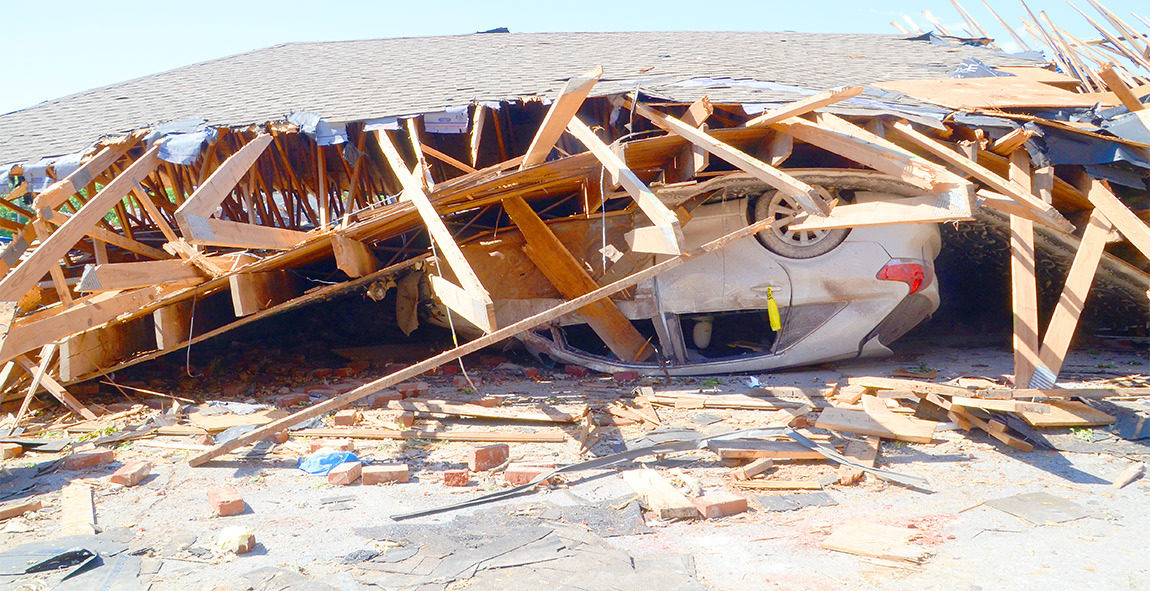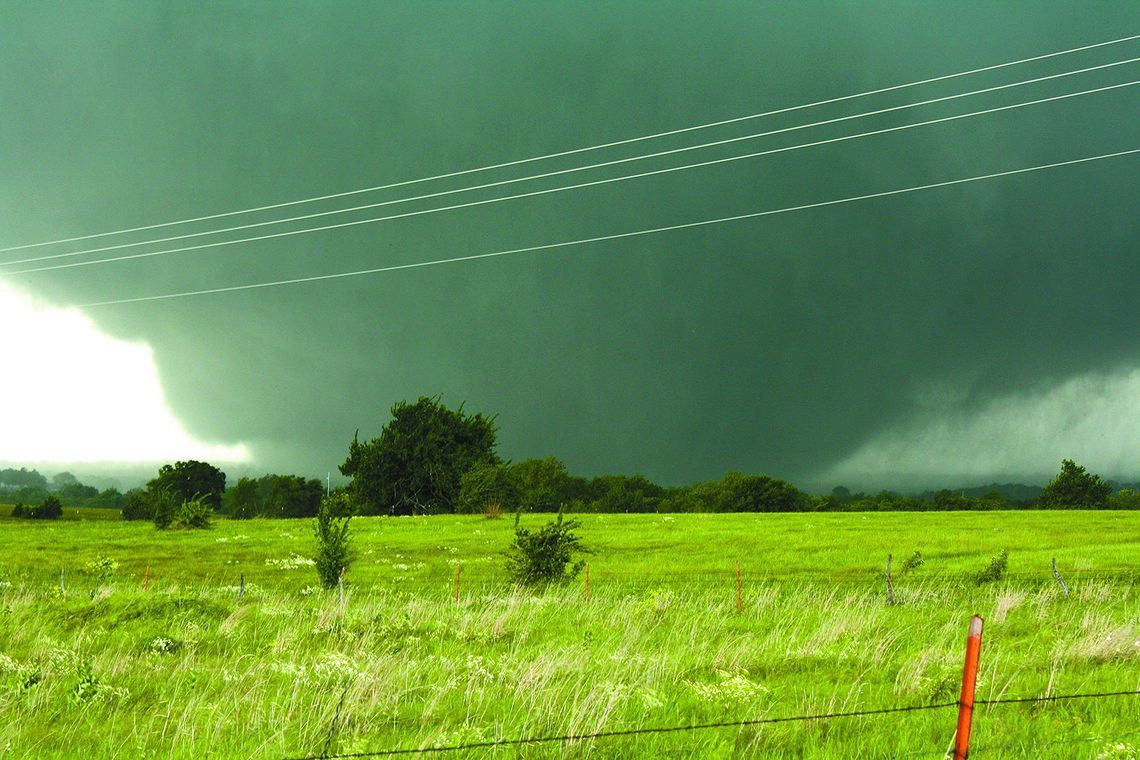Be Prepared Advanced Planning Urged Before Disaster Strikes
Editor’s note: With fresh memories of the devastation caused by the EF-3 tornado in downtown Sulphur and surrounding neighborhoods still on our minds, the following information compiled by OSU Extension Service could help citizens stay safe in future disasters.
In the following discussion, Gina Peek, OSU Extension housing and consumer specialist, discusses how you can keep yourself and your family safe and prepared during the storm season.
Preparing for a natural disaster ahead of time can mean the difference in life or death. Because disasters such as floods, ice storms, wildfires and tornadoes can happen quickly, it’s important to make a safety plan ahead of such an event.
“Although we do have advanced weather advisories, we don’t have a lot of advanced warning in emergency situations. Wildfires, especially, can spark and burn out of control very quickly,” said Gina Peek, assistant director, Oklahoma State University Extension/Family Consumer Science program leader and associate dean for Extension and Engagement in the College of Education and Human Sciences. “This is why it’s so important for Oklahomans to have an emergency plan in place.”
To begin work on a plan, determine how you and other family members will receive emergency alerts and warnings, where you will take shelter when necessary and what evacuation route you will take. Local news stations have weather apps available for phones that send out emergency weather information.
Next, create a plan for how family members will communicate with each other during the emergency. Make sure everyone has contact information for the rest of the family.
“As you’re planning, be sure to consider any specific needs of family members. For instance, think about the ages of everyone in the household, diets, any language and cultural or religious considerations, as well as medical concerns and disabilities,” Peek said. “It’s a good idea to have a ‘go-bag’ with necessities that easily can be grabbed on the way to a shelter.”
Finally, sit down and draft a family emergency plan. This emergency plan should incorporate a range of details such as the contact information for each person in the household, the agreed upon emergency meeting locations and other important phone numbers. Everyone in the family should receive copy of the plan and the family should set aside time to practice implementing it.
“Knowing what to do and where to go in a disaster will help calm any nerves and reduces your chances of being hurt or injured in an emergency situation,” Peek said.
The U.S. government website has more information regarding disaster and emergency preparation.
Preparing In Case Of Tornadoes
Having a plan of action in place and provisions set aside will give households extra time to seek safety when a tornado threatens.
Dark-gray clouds above open field.
Three such actions are easy to implement: creating an emergency kit, developing a customized communications plan and signing up to receive emergency alerts.
Abasic emergency kit contains supplies such as nonperishable food and water for at least three days, a flashlight, extra batteries and a first aid kit, said Gina Peek, assistant director, Oklahoma State University Extension/Family Consumer Science program leader and associate dean for Extension and Engagement in the College of Education and Human Sciences.
Begin building the kit at home by checking shelves, drawers, closets and cabinets for useful items. Other families and friends may be looking for the same items, so duplicates might be tradable. Additional tips and U.S. Government Federal Emergency Management Agency (FEMA) recommendations are available online.
Key elements of a customized communications plan should include:
•A paper copy of every family member’s contact information.
• Contact information of other important people and places such as doctors, insurance agents, employers and schools.
•An identified out-of-town contact who has agreed to serve in the role. A designated person who lives beyond the local path of a tornado may be in a better position to communicate among separated household members. Make certain every household member has a smartphone, funds or a prepaid phone card to call the emergency contact.
“Make use of text messages whenever possible in addition to phone calls when attempting to communicate with one another or the designated emergency contact,” Peek said. “Cell phones can receive texts even if the person is on the line.”
Finally, sign up to receive local alerts and warnings on smartphones, e-tablets and similar devices. The National Weather Service provides timely updates on its website, app and social media outlets. Some local news stations also offer viewers the option of signing up to receive weather alerts on cell phones, online and through various social media platforms.
“Being in the path of a tornado is a dangerous and stressful situation,” Peek said. “Preparation can help reduce the negative effects of both.”
Prepare For Tornado Season Before The Sirens Sound Preparing an existing storm shelter or other safe space for a tornado should be at the top of everyone’s to-do list. Think of it as risk management, which can pay significant dividends toward safeguarding the lives of family and pets, said Gina Peek, assistant director, Oklahoma State University Extension/Family Consumer Science program leader and associate dean for Extension and Engagement in the College of Education and Human Sciences.
Peek offered the following checklist as a good place to start: Check to make sure the shelter area is dry. If not, determine how the water is getting in and repair any cracks. If water is coming in through the door, homeowners will need to divert storm water away from the entrance.
Spiders, rodents and other pests also can get in through cracks. Seal those openings.
Clean the area thoroughly. Clear out cobwebs and other fire hazards. Sweep the floor.
Prepare an emergency kit as suggested by the Federal Emergency Management Agency (FEMA).
Medications should be ready to take into the shelter. For households with small children, pack diapers, formula and similar child-related essentials.
Make sure bottled water is already on site. A good rule of thumb is to provide one gallon per person per day.
Don’t forget special stuffed toys or blankets that can help comfort small children.
Finally, don’t forget about your feet.
“Everyone should be wearing shoes,” Peek said. “There may be storm damage after the extreme weather has passed – possibly broken glass, splintered wood, downed trees, twisted metal and other hazards. Feet need to be protected.”
Additional ideas for storm shelter preparation are available through the federal Occupational Safety and HealthAdministration.

The roof this building in downtown Sulphur was blown over on top of a car on Muskogee Street during the April 27, 2024 twister that destroyed much of the historic business district. One person in the building above died when the tornado swept through about 10:37 p.m. that evening.



